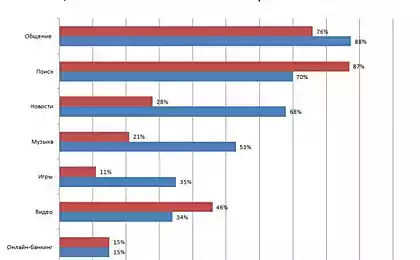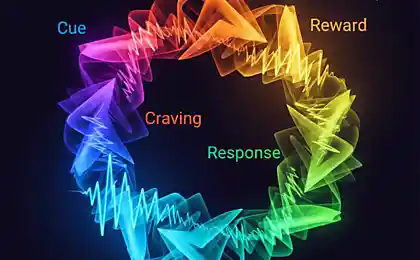488
The Internet habits of the human psyche
These questions seem unrelated at first glance. How you use the Internet reflects your psychology. A lot of play in the evenings in online poker? Probably like the risk. Like to publish on YouTube videos with him in the lead role, performing karaoke? Definitely you are an extrovert. What about the patterns of your behavior online? How often do you send letters, switch from window to window? These patterns can tell a lot. Including whether you are in a depression.

This is a recent study on this subject. The scientists took hundreds of volunteers and studied their behavior according to three criteria: the volume received and sent information, the number of applications and the degree of "entropy" (randomness) of information flow. The researchers did not look at what people are looking for, and how they behave.

It was found that the active use of file-sharing networks, email, chats and frequent switching between sites in most cases indicate depression. Frequent switching between sites, for example, may be indicative of anhedonia (indifference to the pleasures of life), because such people are in desperate need of emotional stimulation. Active correspondence via email (for personal reasons) and chatting talking about the lack of communication.

Why this emphasis on depression? Statistics says that today is perhaps the most common mental disorder. About 10% of the US population suffers from clinical depression. Among University students 30%. With all this depression is difficult to diagnose. 2/3 of people with depression do not realize that their condition is treatable and not seek help. During the surveys (the traditional method of diagnosis), they answer as I would like to feel and how to feel really. In this respect, the analysis of Internet behavior might be a better alternative.

This analysis allows you to learn about depression even before the person himself is aware of it. The only question is how technically it to organize.
Source: /users/155

This is a recent study on this subject. The scientists took hundreds of volunteers and studied their behavior according to three criteria: the volume received and sent information, the number of applications and the degree of "entropy" (randomness) of information flow. The researchers did not look at what people are looking for, and how they behave.

It was found that the active use of file-sharing networks, email, chats and frequent switching between sites in most cases indicate depression. Frequent switching between sites, for example, may be indicative of anhedonia (indifference to the pleasures of life), because such people are in desperate need of emotional stimulation. Active correspondence via email (for personal reasons) and chatting talking about the lack of communication.

Why this emphasis on depression? Statistics says that today is perhaps the most common mental disorder. About 10% of the US population suffers from clinical depression. Among University students 30%. With all this depression is difficult to diagnose. 2/3 of people with depression do not realize that their condition is treatable and not seek help. During the surveys (the traditional method of diagnosis), they answer as I would like to feel and how to feel really. In this respect, the analysis of Internet behavior might be a better alternative.

This analysis allows you to learn about depression even before the person himself is aware of it. The only question is how technically it to organize.
Source: /users/155























